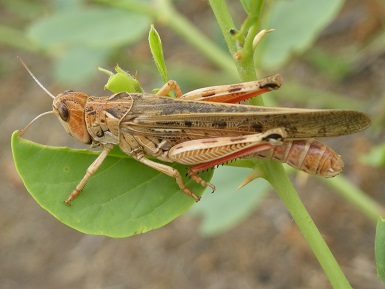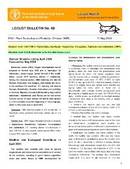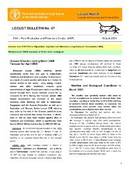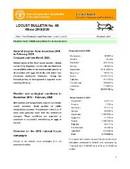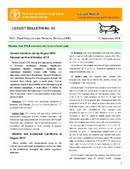General situation during May 2020 Forecast for June 2020
Moroccan Locust (DMA) hopper development continued in Azerbaijan and Georgia and finished in most Central Asia (CA) countries followed by fledging, mating and egg-laying. In many countries, particularly in Kyrgyzstan and Tajikistan, anti-locust campaign was seriously hampered by COVID-19, and some DMA infestations were not treated in time. As a...
General Situation during April 2020 Forecast for May 2020
Moroccan Locust (DMA) hopper development was in progress in Central Asia (CA) and in Azerbaijan. In Uzbekistan, dense hopper bands formed in the south. Italian Locust (CIT) hatching started in Uzbekistan. During the forecast period, DMA hatching will start in Russian Federation and fledging and mating will occur in the...
General Situation during March 2020 Forecast for April 2020
Moroccan Locust (DMA) hatching started significantly earlier than last year in Afghanistan, Tajikistan and Uzbekistan (and probably Turkmenistan), as a result of a warm weather with close to or below the normal rainfall in late winter - early spring. Overall, warmer and drier conditions ensured good overwintering of eggs. If...
General situation from November 2019 to February 2020 Forecast until late March 2020
Natural cycles of the three locust species – Italian Locust (CIT), Migratory Locust (LMI) and Moroccan Locust (DMA) ended in late summer/early autumn in all countries with eggs laid in the soil, where they overwinter (embryonic diapause). During the forecast period, no development is expected as no hatching will occur....
General situation during August 2019 Forecast until mid-October 2019
Italian Locust (CIT) mating and egg-laying continued in Armenia, Azerbaijan, Georgia, Kazakhstan, Kyrgyzstan, Russian Federation, Tajikistan and Uzbekistan. Migratory Locust (LMI) mating and egg
laying continued in Kazakhstan, Russian Federation and Uzbekistan. During the forecast period, locusts will complete their natural cycle in most areas. Control operations ended in all countries;...

